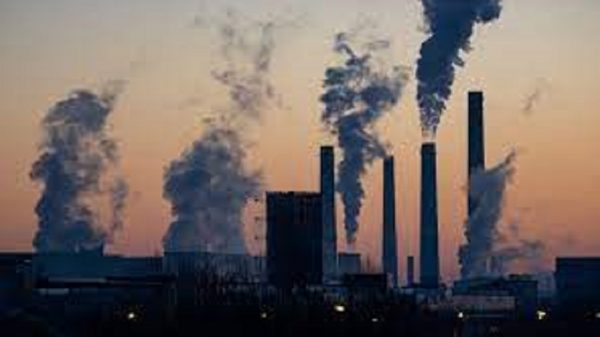China’s Determination and Achievement in Reducing Carbon Emissions

Han Yiyuan :
At present, various threats brought by climate change are becoming more and more serious, and potential climate tipping points could change the world forever. China actively participates in international climate governance and earnestly fulfils its obligations under the Paris Agreement. As a major developing country, it has taken the lead in announcing to hit peak emissions before 2030 and for carbon neutrality by 2060. It has been recognised and praised by many parties in the international community. However, some developed countries continue to pressure China to assume responsibility beyond China’s current national strength and development stage.
First of all, from the perspective of per capita emissions, China’s level is much lower than that of developed countries such as the United States and Australia. According to data provided by Oxford University’s Our World in Data website, China’s per capita carbon dioxide emissions were 7.1 tons in 2019, compared to 16.1 tons in the United States and 16.3 tons in Australia. China’s per capita carbon dioxide emissions are less than half those of the United States and Australia. Compared with its neighbours, South Korea’s per capita carbon dioxide emissions were 11.9 tons and Japan’s 8.7 tons, which are also higher than China.
Moreover, from the 1970s to the beginning of the 21st century, the per capita carbon dioxide emissions of the United States exceeded 20 tons at one time, while China’s per capita emissions have been at a low level for decades, and only slightly exceeded the world’s per capita emissions in the past 15 years. The 2020 Emission Gap Report issued by the United Nations Environment Programme (UNEP) also clearly pointed out that China’s current per capita greenhouse gas emissions are still lower than the average level of developed countries, similar to the EU level, and far lower than the United States and Russia.
Second, in terms of historical emissions, China is not the country with the largest carbon dioxide emissions. Judging from the current annual carbon dioxide emissions, China is the largest emitter. Take 2019 as an example, the global carbon dioxide emissions were 36.4 billion tons, and China’s were 10.2 billion tons, accounting for 27.9% of global emissions. However, an objective interpretation of this number must be combined with the fact that China is a populous country undergoing rapid industrialisation and urbanisation. From a cumulative perspective, China is not the largest carbon emitter.
Before the 19th century, almost all of the world’s carbon dioxide emissions came from the United Kingdom. Between the two world wars, the United States was in a stage of rapid economic development, and its carbon emissions once accounted for half of the world. Our World in Data website has calculated that from 1750 to 2019, the global cumulative carbon dioxide emissions exceeded 1.65 trillion tons, of which the United States accounted for 25%, the European Union accounted for 17.4%, and China accounted for 13%. China’s cumulative emissions were only equivalent to half of the United States. The United Nations Framework Convention on Climate Change (UNFCCC) defines Common but Differentiated Responsibilities, which emphasises that developed countries should take responsibility for historical emissions. Robbie Andrew, a senior researcher at the Centre for International Climate Research (CICERO) in Norway, said, China began producing significant amounts of CO2 much later when compared to its historical emissions. “China’s emissions really weren’t significant. There was already a problem before China came along. So, effectively, China did not create the problem.
Third, from the perspective of carbon emission intensity, while China is achieving economic growth, its carbon intensity has steadily declined. Reducing emission intensity means that less pollution is being created per unit of GDP. This indicator is mainly used to measure the relationship between a country’s economy and carbon emissions. Public data shows that by the end of 2020, China’s carbon intensity has dropped by about 48.4% compared with 2005. This means that for every dollar of GDP created, carbon dioxide emissions have been reduced by nearly half compared to 2005, substantially exceeding the climate goal by 2020, indicating that China’s green and low-carbon development path has achieved initial success.
At the Climate Ambition Summit held by the United Nations in December 2020, President Xi Jinping announced a series of new measures such as increasing China’s Nationally Determined Contributions (NDC), including a reduction in carbon intensity by more than 65% by 2030 compared to 2005. As a developing country, China still faces many challenges such as unbalanced and inadequate development. It requires extremely hard work to achieve the above goals, which also reflect China’s determination to implement the Paris Agreement as a major country.
Fourth, from the perspective of the international division of labour, China should not be responsible for all emissions generated during the production process. So far, international emission statistics have generally been based on the producer principle rather than the consumer principle. To put it simply, when goods made in China are exported to other countries, the greenhouse gases emitted during the production process are only counted on China, and not the importing country. In the process of globalisation, developed countries have outsourced a large number of production processes, while China has gradually developed into a “world factory”. According to a report in German media, in the first decade of the 21st century, exports accounted for about one-fifth of China’s emissions. More and more scholars now propose that the responsibility for carbon dioxide emissions should not only be borne by producers, but should be shared by consumers and producers based on economic use.
The Paris Agreement reaffirms the principle of Common but Differentiated Responsibilities, that is, when measuring a country’s contribution to climate change, we should not ignore whether the country has made efforts commensurate with its national conditions and development stage. China is in the stage of industrialisation and urbanisation and facing the arduous task of developing economy and improving people’s livelihood. Under such circumstances, it is not easy to achieve such achievements.
The “14th Five-Year” (2021-2025) is an important period for China to promote high-quality development and build a beautiful country. It is also a critical period for the implementation of the national determined contribution goals. China will continue to effectively control greenhouse gas emissions and play an important role in global climate governance.
The writer is an Assistant Researcher,
Institute of World Politics, China Institutes of Contemporary International Relations (CICIR)





























Leave a Reply